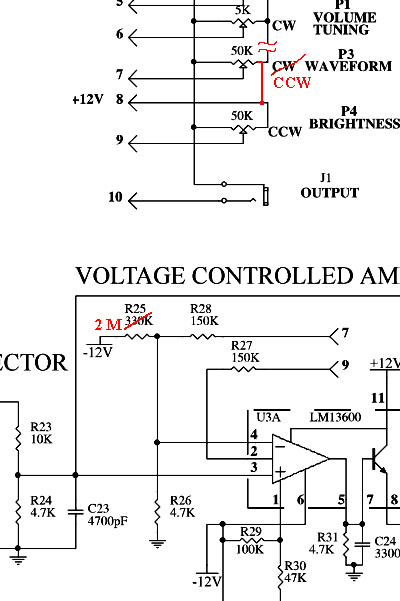Thanks! Pitch sounds smooth falling all the way to null. I assume the jerky rising pitch is somehow mechanical in nature?
Buffering tends to remove any timbre change with pitch. I've often thought timber change with volume might be a better thing?
Thanks! Pitch sounds smooth falling all the way to null. I assume the jerky rising pitch is somehow mechanical in nature?
Buffering tends to remove any timbre change with pitch. I've often thought timber change with volume might be a better thing?
As I noted earlier, the antenna circuit has been disconnected. The tuning circuit is not still soldered... The tone changing was produced by approaching the permanent magnet to coil. In this way it is difficult to pass slowly through the zero zone. Plus, the sound card cuts all the low frequencies at this moment.
"might be a better thing?"
Real instruments change the timber on both, the volume and freq variations. This could be more easily implemented in digital theremin.
1/2 of LM13700 is unproductively used in EW (can be replaced by the conventional opamp). Maybe it's time thinking how to involve it for timbre morphing?
Continuation of the story.
There are, at least, three ways to correct the operating of U3-B (as now we have a positive polarity of the input signal):
1. Shifting the level at pin 3 with an extra resistor 100...200k, connected between R24 and -12V.
2. Swapping inputs 3 and 4 (by reconnection the R23 from R24 to R26).
3. Shifting the level on pin 4 by these minor changes:
The 3-rd case has an advantage: it eliminates the net "-12V" from the group of P3-P4.
This variant was successfully tested; the output waveforms are presented below (recorded by the sound card).
1. The "WaveForm" knob is in 0, 50 and 100% position (i.e. tap voltages are +12V, +6V and 0V). The "Brightness" is fixed at 0% (+12V). Audio frequency is about 300Hz.
2. The "WaveForm" is fixed at 0%. The "Brightness" knob is turned from 0 to 100%. 
3. The "WaveForm" is fixed at 100%. The "Brightness" knob is turned from 0 to 100%.
All the graphs are taken from this recording.
The output signal (the knobs "WaveForm" and "Brightness" are in 0% positions) from 12 Hz to 6 kHz is
uploaded here.
"Astounding" is that Miller EQ and volume coils can be successfully replaced by the DIY coils.
Multi-sectional design helps to achieve hight SRF values (740 kHz of my 26 mH coil vs 700 kHz of the Miller 10 mH coils, which give much worse values in series connection.
Again, Happy Birthday Lev Sergeyevitch!
Валерий, лучше покопаться (разобраться) с настройками уже имеющегося инструмента - попрообовать разные варианты, сделать под себя. В схемах со связанными контурами не все так однозначно. Etherway точно такой же, как и Etherwave. Звук ни того, ни другого мне лично не нравится. Спасибо за интерес!
You must be logged in to post a reply. Please log in or register for a new account.